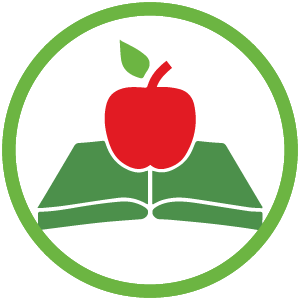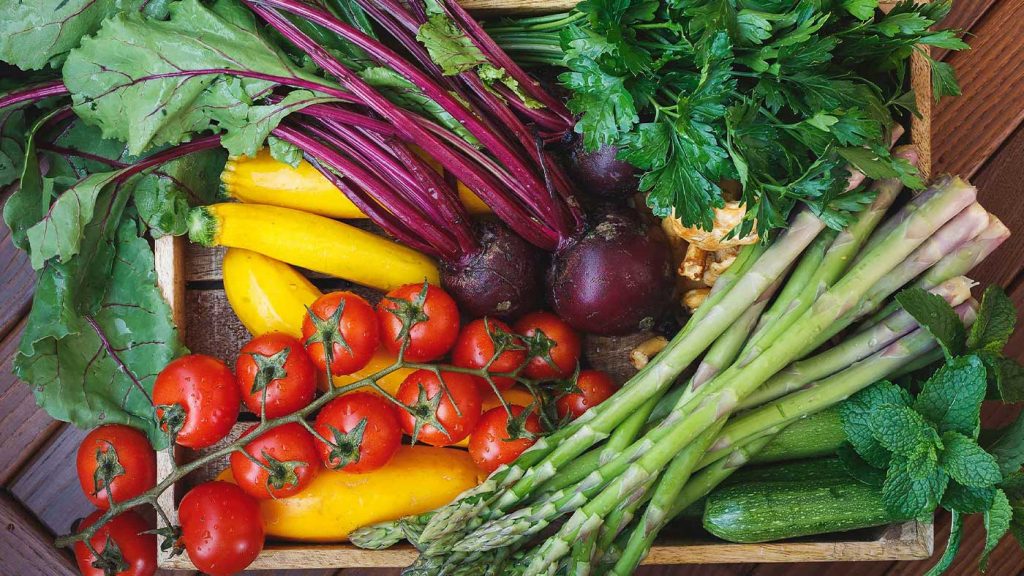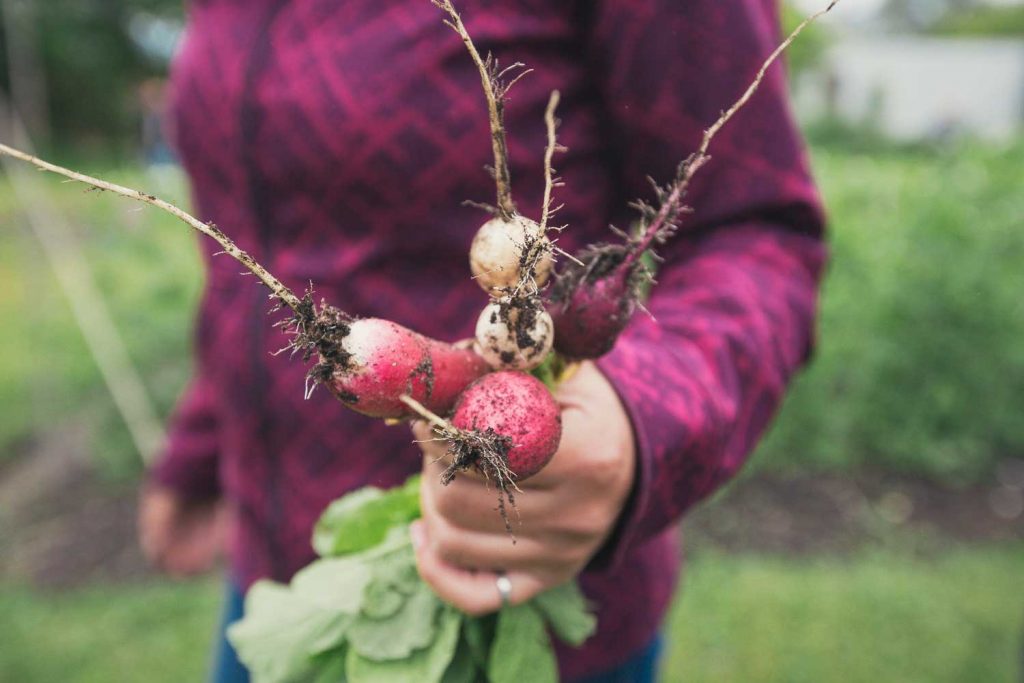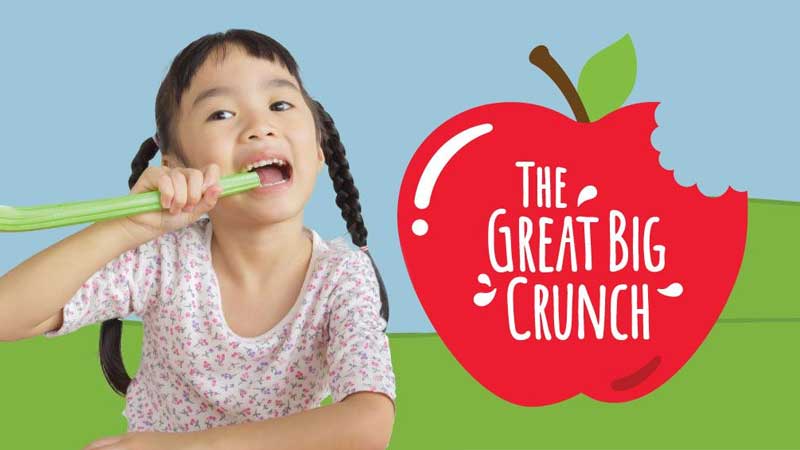School Food Environments

GOAL:
Improve the quality and quantity of good food available, the food skills and food literacy of children and youth in the Thunder Bay Area through supportive healthy school food environments.
What Are the Issues Around School Food Environments in the Thunder Bay Area?
Fruits, vegetables, and other foods are important for the healthy physical and mental development of children and youth, yet they are disproportionately affected by food insecurity and consume high levels of highly processed food. As a result, they are developing chronic diseases at a younger age.
An overwhelming number of young people—from preschool children to teenagers—are not eating enough nutritious foods needed for building strong bodies and minds. At the same time, consumption of foods high in salt, sugar, and fats is increasing. If nothing is done, the current generation of children will develop chronic illnesses much younger and be more affected as they age. 1 Preventable chronic diseases also threaten the sustainability of our health care system. Since poor diets are a major contributing factor to health problems, creating healthier food environments and teaching children about better food options is one way for local governments and school boards to promote healthy eating that requires little investment.
Children and youth are over-represented among food insecure individuals in Canada. 2 Despite efforts already being made to provide better access to food for families, some children continue to suffer from food insecurity and malnourishment. Although there are several good school nutrition programs operating in the country, Canada is the only G7 country without a national school nutrition program.
There is an enormous imperative for improving eating habits among children and youth since students who eat better perform better. Arriving to class on time and ready to learn positively impacts student success, and in turn, impacts the vitality and culture of our communities. 3 Since food education reconnects individuals to how food is grown and produced, building healthy school food environments sets students on a path for becoming more active participants in decisions about the food system as consumers, parents, and decision-makers later in life.
Educational institutions are well-positioned in our communities to positively impact the health of our children. Many have land for gardens and kitchen facilities that can be used for preparing food. Schools have an ability to innovate and excel at involving parents and the broader community in activities. Children also spend a significant amount of time at school, which creates ample opportunity to impact student food literacy and skills to improve unhealthy eating trends.
Measures of improving school food cultures and access to food
Number of schools with a food garden (2022)
14
Measured: 2022
Source: Thunder Bay + Area Food Strategy. (2022). Community Food Security Database. 4
Number of schools with a pollinator garden (2022)
16
Measured: 2022
Source: Thunder Bay + Area Food Strategy. (2022). Community Food Security Database. 5
Number of schools with a greenhouse (2022)
3
Measured: 2022
Source: Thunder Bay + Area Food Strategy. (2022). Community Food Security Database. 6
Number of high schools with a “Get Fresh Cafe” farm to cafeteria program (2022)
3 *
*closed during COVID
Measured: 2021
Source: Stephens, Airin. (2022). Roots Community Food Centre. Personal Communication. 7
Number of farm to cafeteria events (2022)
N/A – COVID
Measured: 2021
Source: Stephens, Airin. (2022). Roots Community Food Centre. Personal Communication. 8
Number of schools with Student Nutrition Programs (2022)
51
Measured: 2022
Source: Hobbs, Daniel. (2022). Student Nutrition Programs, Canadian Red Cross. Personal Communication. 9
Estimated number of people volunteering for Student Nutrition Programs (2022)
N/A – COVID
Measured: 2021
Source: Hobbs, Daniel. (2022). Student Nutrition Programs, Canadian Red Cross. Personal Communication. 10
Number of food classes in schools per year – elementary students participating (2022)
1800
Measured: 2021
Source: Thunder Bay + Area Food Strategy. (2022). Community Food Security Database. 11
Number of culinary class offerings per year – secondary school (new for 2022)
41
Measured: 2021
Source: Thunder Bay + Area Food Strategy. (2022). Community Food Security Database. 16
Number of adult education cooking workshops in schools (2022)
N/A – COVID
Measured: 2021
Source: Stephens, Airin. (2022). Roots Community Food Centre. Personal Communication. 12
Number of meals served through adult education cooking classes (2022)
N/A – COVID
Measured: 2021
Source: Stephens, Airin. (2022). Roots Community Food Centre. Personal Communication. 13
Number of schools participating in the Great Big Crunch (2022)
29
Measured: 2022
Source: Khan, Nusrat. (2022). Student Nutrition Programs, Canadian Red Cross. Personal Communication. 14
Number of Crunchers (Great Big Crunch) from Thunder Bay (new for 2022)
6193
Measured: 2022
Source: Khan, Nustat. (2022). Student Nutrition Programs, Canadian Red Cross. Personal Communication. 15
Number of food literacy classroom visits (external) per year (new for 2022)
2020 – 62+ visits 2021 – 84+ visits
Measured:
Source: Stephens, Airin. (2022). Roots Community Food Centre. Personal Communication. 17
Number of land-based learning programs in schools (new for 2022)
12+
Measured: 2022
Source: Stephens, Airin. (2022). Roots Community Food Centre. Personal Communication. 18
What do the 2022 School Food Environments Indicators Tell Us?
Schools across the region have been working hard to include food literacy skills and healthy, sustainable, culturally appropriate and local foods in their programs, both inside and outside the classroom.
There are a multitude of approaches to help ensure system-wide support for healthy school food environments. Since 2015, local school boards have invested significant resources into developing more culinary programs and classes to build student food literacy skills at the elementary and secondary levels. The number of food literacy classroom visits continues with public health and community organizations.
Another positive trend across some school boards is the growth of land-based education programs, such as Kendomang Zhagodenamnon Lodge (KZ Lodge), that support hands-on learning and cultural teachings with students and the broader community. A number of schools continue to develop vegetable gardens, pollinator gardens, and use greenhouses to complement classroom teaching and learning. Increasingly, many of these initiatives are being supported by school board policies. Student nutrition programs continue to source regional foods and some school fundraisers use regional food items as well.
The COVID-19 Pandemic had a significant impact on school food environments. School cafeterias were closed during the pandemic, resulting in limited access to food at school, as well as increased pre-packaged food options. School vegetable and pollinator gardens saw a significant reduction in use. Community organizations and volunteers were not allowed in classrooms which also limited food access and food literacy programming. With cafeterias, gardens and community organizations returning to schools, healthier and more accessible options are expected to increase.
As pandemic restrictions have eased, several organizations are reinvigorating their partnerships with schools to improve access to fresh foods and are offering programming aimed at teaching food skills like growing, cooking, and preserving. A number of schools are host sites for the Good Food Box, which is coordinated by the Northwestern Ontario Women’s Centre. Others run Student Nutrition Programs with support from the Canadian Red Cross. A range of food-centric programming for children and youth is provided by local organizations both in and out of school (e.g., before/after-school programs, daycares, alternative programs).
While there have been considerable gains made in some areas, there is still work to be done to improve school food environments. Children and youth spend most of their day at school, which makes them important places to build good food skills and knowledge. However, the school culture around food is often in conflict with healthy eating curriculum, access to culturally appropriate and sustainable food, and the use of local food. For example, cafeterias rarely cook with fresh ingredients, school fundraisers often use sugary and processed foods (e.g. pizza, hot dogs and chocolate) and there are few supports for school gardens. As a result, efforts to help students learn about growing and harvesting with the seasons, menu planning, culinary skills, and knowledge about the social and environmental implications of our food systems are inconsistent.
There are local and national opportunities to make healthy food access, food literacy and skill development a priority in schools. There is room to grow community partnerships with public health and community organizations. There is room for stronger policy support for school gardens, school food activities such as fundraising, food literacy efforts, and land-based education offerings. On a national scale, efforts are being made to build a National School Food Program to improve learning and health outcomes for all children and youth across Canada and Indigenous territories. Please visit HealthySchoolFood.ca for more information. Implementing a National School Food Program would create significant opportunities to enhance school food environments.
Organizations Working with Schools to Improve food Literacy & Access
- Roots Community Food Centre
- Thunder Bay District Health Unit
- Shkoday Abinojiiwak Obimiwedoon
- Thunder Bay Multicultural Youth Centre
- Our Kids Count
- Evergreen a United Neighbourhood
- Salvation Army
- Thunder Bay Indigenous Friendship Centre
... and others
School Food Environments Highlights
Cooking with Fire – the Joys of Outdoor Cooking
submitted by Roots Community Food Centre
As COVID-driven social distancing continued and people spent more time together outside, Roots CFC staff saw a new level of interest in cooking outdoors over fire.
Traveling the World and Local Community Through Culinary Arts
submitted by Lakehead Public Schools
an invitation for Grade 7 and 8 students to delve into a world of discovery, creativity, and experiential learning
Local Food Purchased Through Student Nutrition Programs
Student Nutrition Programs (SNP) provide opportunities for students to have access to nutritious food at school through breakfast and/or snack programs. The Canadian Red Cross administers the program locally. In 2015, 6 programs used local pancake mix regularly....
Making Gardens Grow
The Healthy Eating Makes the Grade project began in 2010 with a Heart and Stroke Foundation Spark seed grant to hire a part-time coordinator to develop a partnership to work on improving student health by increasing access to healthier food options in and around...
The Great Big Crunch
The Great Big Crunch is a special day of good food education, ending with a massive, synchronized bite into a crunchy Ontario apple or carrot to celebrate. In 2015, more than 5,500 students in 26 schools in the Thunder Bay area participated. The event is part of a...
2022 School Food Environments References
- Healthy Kids Panel. (2013). No Time to Wait.
- Food Banks Canada. (2014). HungerCount 2013.
- Food Banks Canada. (2014). HungerCount 2013.
- Thunder Bay + Area Food Strategy. (2022). Community Food Security Database.
- Thunder Bay + Area Food Strategy. (2022). Community Food Security Database.
- Thunder Bay + Area Food Strategy. (2022). Community Food Security Database.
- Stephens, Airin. (2022). Roots Community Food Centre. Personal Communication.
- Stephens, Airin. (2022). Roots Community Food Centre. Personal Communication.
- Hobbs, Daniel. (2022). Student Nutrition Programs, Canadian Red Cross. Personal Communication.
- Hobbs, Daniel. (2022). Student Nutrition Programs, Canadian Red Cross. Personal Communication.
- Thunder Bay + Area Food Strategy. (2022). Community Food Security Database.
- Thunder Bay + Area Food Strategy. (2022). Community Food Security Database.
- Stephens, Airin. (2022). Roots Community Food Centre. Personal Communication.
- Stephens, Airin. (2022). Roots Community Food Centre. Personal Communication.
- Stephens, Airin. (2022). Roots Community Food Centre. Personal Communication.
- Khan, Nusrat. (2022). Student Nutrition Programs, Canadian Red Cross. Personal Communication.
- Khan, Nustat. (2022). Student Nutrition Programs, Canadian Red Cross. Personal Communication.
- Stephens, Airin. (2022). Roots Community Food Centre. Personal Communication.






